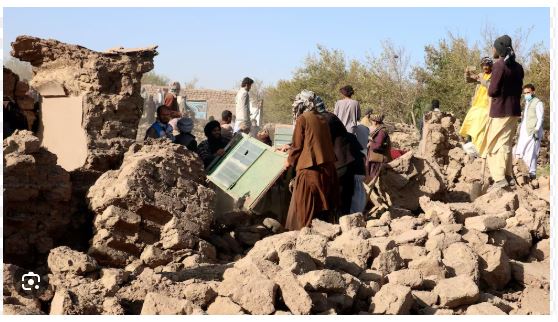When midnight struck on Sunday in eastern Afghanistan, most families were asleep in their homes. Within seconds, thousands were trapped beneath crumbling mud walls as a 6.0 magnitude earthquake tore through Kunar and Nangarhar provinces. By Tuesday, officials confirmed at least 1,411 dead and more than 3,000 injured, making it one of the deadliest quakes in the region’s recent history.
The tremors destroyed over 8,000 houses, with remote villages like Chawkay, Nurgal, and Dara-e-Pech left in ruins. In many areas, rescuers still haven’t reached survivors. “Dozens of commandos have been airlifted to places where planes couldn’t land,” said government spokesperson Hamdullah Fitrat, describing the desperate effort to pull people from the rubble.
The quake struck just 17 miles east of Jalalabad, according to the U.S. Geological Survey. Aftershocks only worsened the panic: a 5.2 magnitude tremor rattled the region Tuesday, forcing survivors to flee into open fields for safety.
Perhaps the most haunting images came from a hospital in Nangarhar, where injured children lay bandaged and alone, separated from their parents in the chaos. “These are painful and unbearable moments,” said Dr. Sharafat Zaman Amar, spokesperson for Afghanistan’s Ministry of Health.
The World Health Organization estimates 12,000 people are directly affected, with food, clean water, and shelter now urgent priorities. While most health centers in the region remain operational, the sudden flood of casualties has stretched resources to the breaking point.
For Afghans, earthquakes are not new. The Hindu Kush mountains where the Indian and Eurasian plates collide—make the country one of the most seismically active regions in the world. Since 1950, more than 70 earthquakes of magnitude 6.0 or larger have hit within 250 km of Sunday’s epicenter, including devastating quakes in 2022 and 2023, each killing over 1,000 people.
But what makes this disaster particularly cruel is timing. Afghanistan is still reeling from economic collapse, hunger, and limited international aid since the Taliban takeover in 2021. Many families now face homelessness as winter looms.
International agencies, including the United Nations, pledged support. Richard Bennett, U.N. special rapporteur for Afghanistan, posted condolences on social media: “As the scale of devastation becomes clearer, my deepest condolences go to the victims and their families.”
Yet aid delivery is complicated by terrain, blocked roads, and strained relations between the Taliban government and international donors. With most victims in rural Kunar, getting help to remote mountain villages is proving to be the greatest challenge.
In the flattened villages, survivors are digging graves alongside rubble. Makeshift burial grounds now mark the landscape. For many, the scale of the disaster is hard to comprehend: entire families wiped out in minutes.
As Afghanistan counts its dead, one question lingers: in a country already battered by conflict and poverty, how many more shocks both natural and man-made can its people endure?


